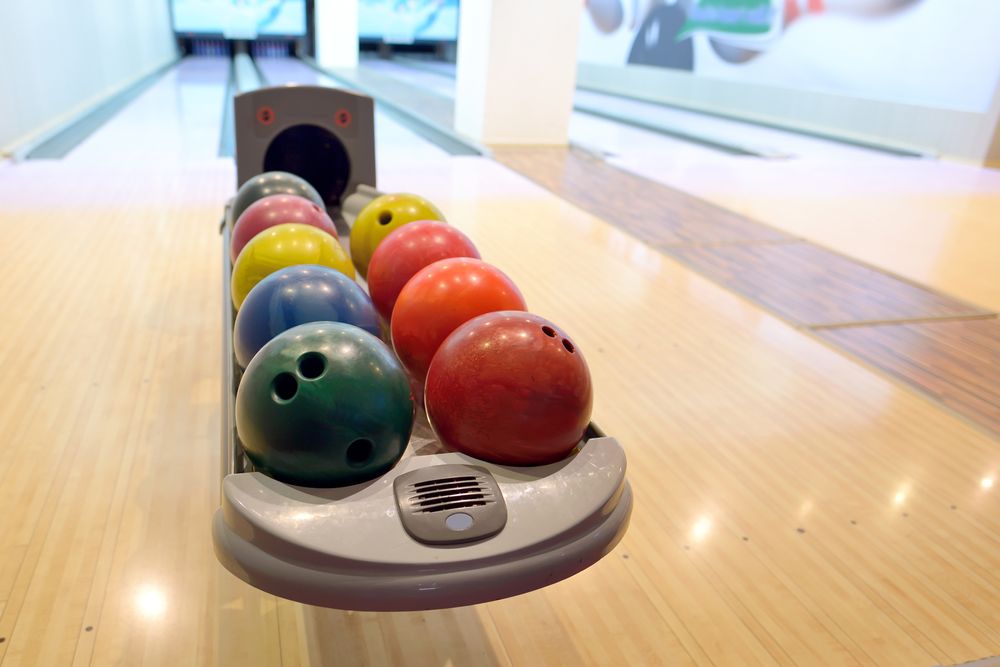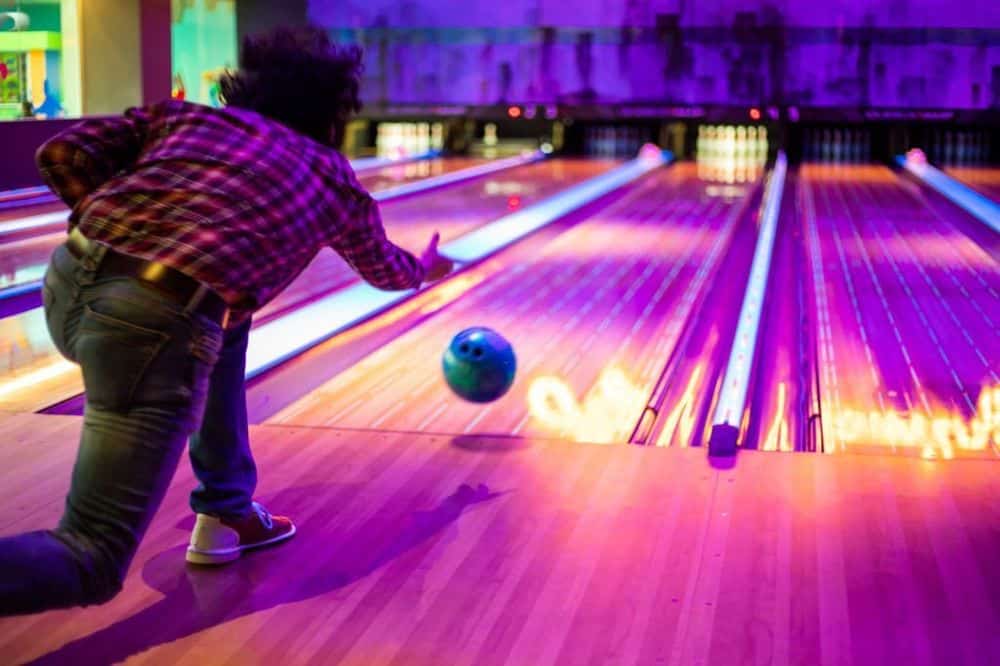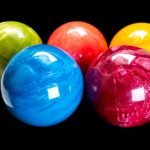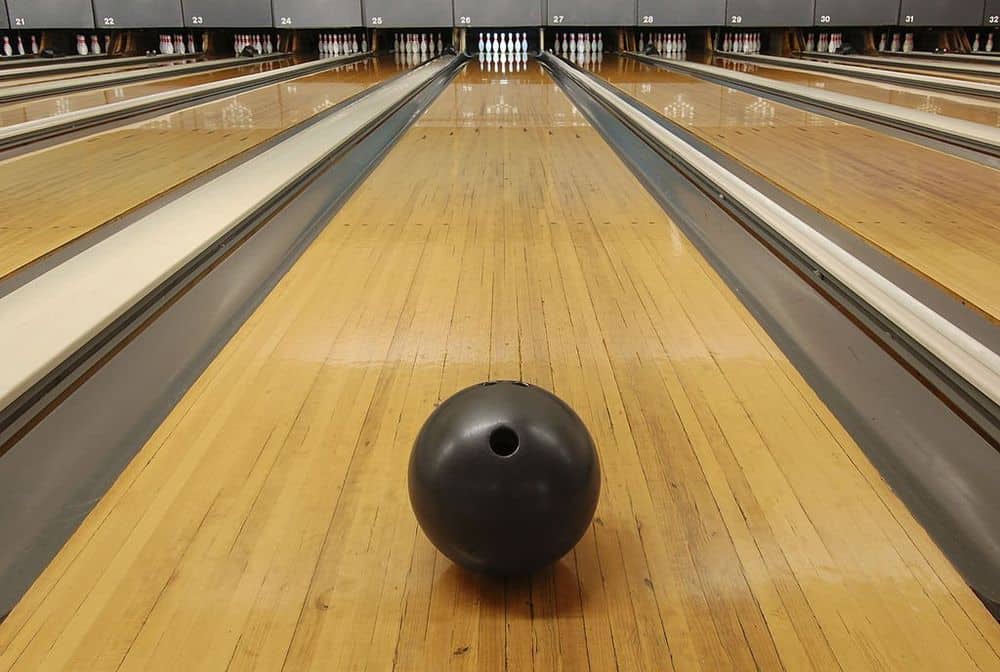When it comes to maintaining your bowling ball, sanding is an important part of the process. Sanding your bowling ball helps to remove oil and dirt buildup, as well as scuff marks and scratches from the surface of the ball.
However, not all sandpaper is created equal, and choosing the right grit for your bowling ball can make all the difference in how well it performs on the lanes. Understanding grit and its importance is key when it comes to selecting the right sandpaper for your bowling ball.
Grit refers to how coarse or fine a piece of sandpaper is, with lower numbers indicating a coarser grit and higher numbers indicating a finer grit. The higher the number, the smoother and more polished the surface will be after sanding.
Using too coarse of a grit can damage your ball’s surface, while using too fine of a grit may not remove enough debris or provide enough texture for grip on oily lanes. In this article, we’ll take a closer look at different grits of sandpaper for bowling balls and provide tips for choosing the right one for your needs.
The Purpose of Sanding Your Bowling Ball
You want to make sure your bowling ball has the perfect surface texture to maximize its performance on the lanes. Sanding your bowling ball is an essential technique that can provide numerous benefits, including better hook potential and increased traction.
By removing the worn-out layer of the ball’s surface, sanding allows you to restore its optimal grip and control. The grit of your sandpaper is crucial in determining how well your bowling ball performs.
The rule of thumb when it comes to selecting a grit size for sanding is simple: lower numbers mean rougher surfaces and higher numbers mean smoother surfaces. Generally, a 500-grit sandpaper is ideal for removing minor scratches and scuff marks from the surface of your bowling ball, while a 2000-grit sandpaper is recommended for achieving a polished finish.
When sanding your bowling ball, it’s important to remember that too much pressure or improper technique can damage its core structure. Always use circular motions with moderate pressure when holding the ball firmly in place.
With practice and patience, you’ll find that you can achieve optimal results with minimal effort. Properly maintaining your bowling ball through regular sanding will help ensure that it lasts longer and performs at its best level throughout each game.
Understanding Grit and Its Importance
Understanding the importance of grit level is crucial for achieving the desired outcome in any DIY project. For example, when polishing a car, using the wrong level of abrasiveness in the polishing material can leave unsightly swirl marks on the paint job. Similarly, when sanding a bowling ball, understanding grit and its importance is crucial.
Grit size refers to the number of abrasive particles per square inch in a sandpaper sheet or disk. The higher the grit number, the finer or smoother the abrasive surface is. Lower grit numbers remove more material faster and are used for heavy-duty sanding tasks such as removing rust. Medium-grit sandpapers ranging from 120 – 400 work well for smoothing out rough surfaces before moving onto finer ones.
When selecting which sandpaper to use on your bowling ball, keep in mind that different parts of the ball may require different grit sizes depending on how much you want to remove. For example, if there are deep scratches or dings that need smoothing out, start with a lower-grit paper like 80-grit. Once those imperfections have been smoothed out, move on to a medium-grade paper like 220-grit before finishing off with a fine-grade paper like 500-grit.
It’s important to incorporate all three types of sandpapers to achieve a smooth and even finish without damaging your bowling ball’s surface. Remember that using too high of a grit too soon could result in unnecessary damage or not enough removal of imperfections. Take your time and be patient through each step until you achieve the desired results!
Different Grits of Sandpaper for Bowling Balls
If you want to achieve a smooth finish on your bowling ball, it’s important to know the different grits of sandpaper available.
For polishing purposes, you’ll want to use a higher grit rating starting at around 1000 and going up from there. The advantage of using a high-grit sandpaper is that it will help create an even smoother surface on your ball.
When it comes to wet vs dry sanding, both methods are acceptable for bowling balls. Wet sanding is often preferred because it reduces heat buildup and helps prevent clogging of the sandpaper with debris. Additionally, water acts as a lubricant and can make the process smoother. Just be sure to always clean your ball thoroughly after wet sanding.
For removing deep scratches or nicks in your ball’s surface, start with a lower grit such as 320 or 400 before moving up to higher levels of abrasiveness.
Remember that too much pressure or using too coarse of a grit can damage your ball irreparably, so take care during this process.
Always follow up any rougher work with finer grits until you achieve the desired smoothness and shine for your bowling ball.
Choosing the Right Grit for Your Bowling Ball
When it comes to achieving the perfect finish on your bowling ball, knowing which level of abrasiveness is right for you can make all the difference in how well you perform on the lanes.
Choosing the right grit for your bowling ball starts with understanding sanding techniques and how they affect ball performance. Sandpaper is graded by its “grit,” which refers to the number of abrasive particles per square inch of paper. The lower the grit number, the coarser and more aggressive the sandpaper will be.
The most common grits used in bowling ball maintenance are 500, 1000, 2000, and 4000. If you’re just starting out or have a new ball that doesn’t require much work, start with a higher grit like 2000 or 4000. These finer grits will give your ball a smooth surface without removing too much material from its coverstock.
If your ball has deep scratches or needs more aggressive sanding due to lane conditions or oil buildup, start with a lower grit like 500 or 1000 before moving up to higher levels.
Ultimately, choosing the right grit for your bowling ball is about finding balance between surface texture and durability. A proper maintenance schedule that includes regular cleaning and resurfacing will help keep your ball performing at its best for longer periods of time.
Remember to always use high-quality sandpaper specifically designed for bowling balls and follow safe sanding practices such as wearing gloves and eye protection. With these tips in mind, you’ll be able to achieve optimal performance from your favorite bowling ball no matter what kind of lane conditions you encounter!
Tips for Sanding Your Bowling Ball with the Proper Grit
You absolutely need to know the right level of abrasiveness for your beloved sphere if you want to be a top scorer on the lanes. Technique adjustments and ball maintenance are crucial, but sanding your bowling ball with the proper grit is equally important.
Sanding can help restore your ball’s original surface texture and improve its reaction on the lane. So, what grit sandpaper should you use? The answer depends on what you’re trying to achieve.
If you’re looking to remove deep scratches or nicks from your ball’s surface, start with a coarse grit like 120 or 180. Then, move on to a finer grit like 360 or 500 for smoothing out rough areas and restoring shine. Polishing tips and finishing touches can also help enhance your ball’s performance, so consider investing in a quality polishing compound.
When it comes to sanding your bowling ball with the proper grit, take your time and follow best practices. Make sure to clean your ball thoroughly before starting, as any dirt or oil can interfere with the sanding process. Use light pressure when applying the sandpaper, moving in circular motions across the surface of the ball.
And always remember that less is more – don’t over-sand or polish too aggressively as this can damage your ball irreparably over time!
Conclusion
Now that you have a better understanding of grit and its importance when sanding your bowling ball, it’s time to choose the right grit for your particular ball.
Remember, a lower grit will remove more material and therefore create a rougher surface on your ball. Conversely, a higher grit will smooth out any imperfections without removing too much material.
So, if you’re looking to increase hook potential or need to remove deep scratches from your ball, start with a lower grit like 500 or 800. If you just need to touch up the surface or want to create a smoother finish, go for something in the range of 2000-4000 grit.
With this knowledge in mind and some practice under your belt, you’ll be able to maintain optimal performance from your bowling ball for years to come.
In summary, choosing the proper grit sandpaper is crucial when sanding your bowling ball. Take into account what kind of results you’re trying to achieve and select an appropriate grit accordingly.
Sanding may seem like a tedious process at first but with patience and diligence, you’ll see improvements in both your game and overall satisfaction with how well-maintained your equipment is.
Happy bowling!









